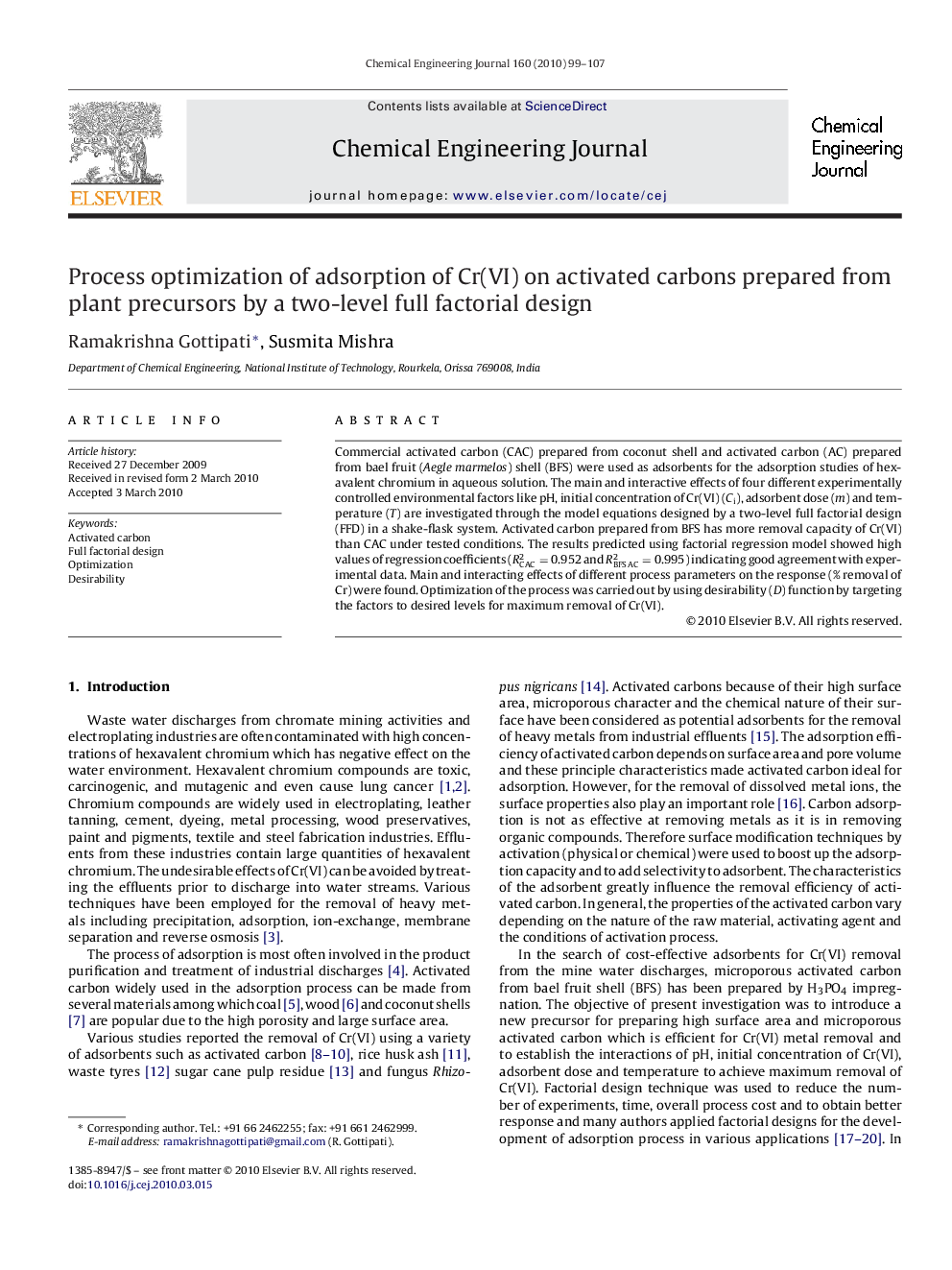| Article ID | Journal | Published Year | Pages | File Type |
|---|---|---|---|---|
| 151829 | Chemical Engineering Journal | 2010 | 9 Pages |
Commercial activated carbon (CAC) prepared from coconut shell and activated carbon (AC) prepared from bael fruit (Aegle marmelos) shell (BFS) were used as adsorbents for the adsorption studies of hexavalent chromium in aqueous solution. The main and interactive effects of four different experimentally controlled environmental factors like pH, initial concentration of Cr(VI) (Ci), adsorbent dose (m) and temperature (T ) are investigated through the model equations designed by a two-level full factorial design (FFD) in a shake-flask system. Activated carbon prepared from BFS has more removal capacity of Cr(VI) than CAC under tested conditions. The results predicted using factorial regression model showed high values of regression coefficients (RCAC2=0.952 and RBFS AC2=0.995) indicating good agreement with experimental data. Main and interacting effects of different process parameters on the response (% removal of Cr) were found. Optimization of the process was carried out by using desirability (D) function by targeting the factors to desired levels for maximum removal of Cr(VI).
